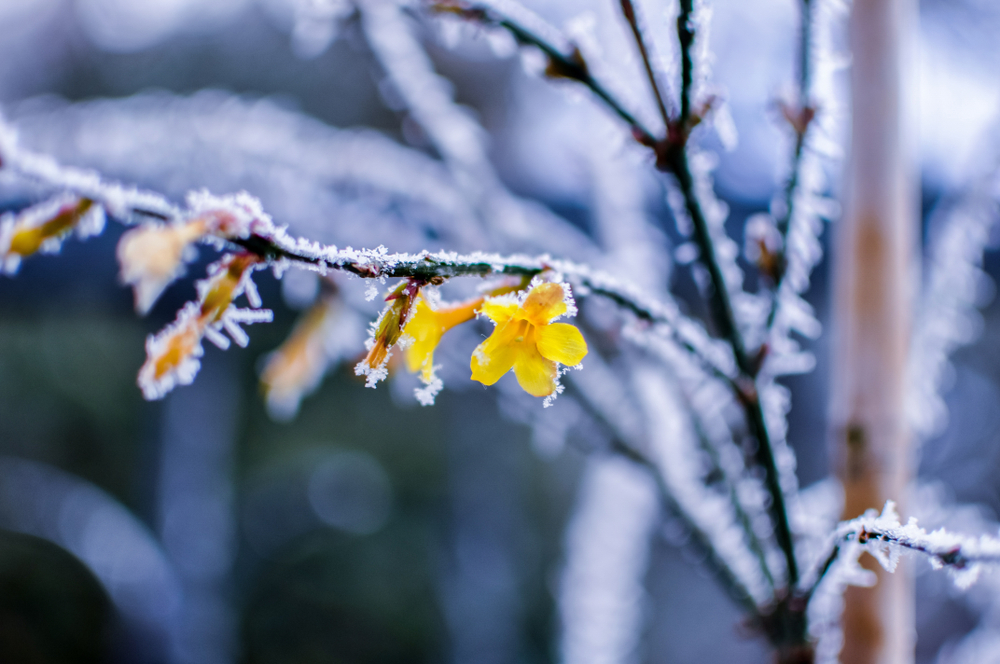
Winter is not typically the season associated with greenery. For many plants, this time of year usually means barren branches and the state of “dying” that typically precedes the spring’s rebirth. Still, this doesn’t mean all flora suffers the same annual fate. There are countless plants that remain lush throughout the year. If you’re curious about the many flowers and herbs of winter, here are a few of the more common winter plants and what they’ve traditionally been used for.
Winter Jasmine
In China, Jasminum nudiflorum has long been a symbol of the wintry months. The jasmine actually flowers in January, releasing a colorful burst of yellow into the cold environment. Though native to China, the plant has been successfully cultivated in other parts of the world and is considered naturalized in both Paris, France, and states like New Jersey and Texas in America. It has predominantly been used as decoration across the world, as the vines are considered quite poisonous to both humans and canines.
Evening Primrose
Though actually considered an Oenothera instead of a proper primrose, the evening primrose is still a common winter find. Found naturally across the Americas, this flower is often called both a sundrop and a suncup due to its color and shape. The seed oil extract is often used in dietary supplements and other health products, with experts claiming the plant has a number of positive benefits. However, medical professionals advise against taking anything containing evening primrose when pregnant or nursing, as studies suggest there could be a harmful reaction.
Camellia
Perhaps one of the most colorful winter plants, the camellia is definitely easy to notice. Though native to eastern and southern Asia, modern estimates suggest that there are more than 3000 different hybrids of the flower found around the world nowadays. The flower has been used in teas and other elixirs for centuries, though modern applications include various cooking products, cosmetics, essential oils, and more.
Crocus
A member of the iris family, the crocus is another winter plant that has a bit of a reputation. Found naturally everywhere from Africa to the Middle East and as far as China, the plants in the crocus family are said to have originated on the island of Crete in Greece. Historical texts indicate people cultivated, bought, and sold the crocus for thousands of years. The crocus is considered toxic, but the plant is treated and used in a variety of modern and traditional medicines.
Snowdrop
With a name like snowdrop, it isn’t surprising that the Galanthus is a winter plant that can be found in abundance throughout winter. Its whimsical appearance can be a cheery sight on a stark day. However, it should be noted that the snowdrop is incredibly poisonous in natural form. Eating a snowdrop has been known to lead to dizziness, nausea, and diarrhea. In some cases, ingesting snowdrop can be fatal. However, extracts from the plant have been used in various treatments for damage to the nervous system.
Bush Lily
Clivia miniata can be found naturally in areas as diverse as Switzerland and South Africa. Also called a “bush lily,” the plant is known for a few key reasons. Not only does it flower in the winter with small, colorful blossoms, it also produces a sweet scent when it does so. For this alone, the bush lily has become popular with gardeners everywhere, from Japan to the United States.
The winter might not seem like a time of year when plants are in full bloom, but there’s always something stirring to life if you know where to look. From bush lilies to crocus, there are all kinds of interesting winter greenery hidden in nature.

